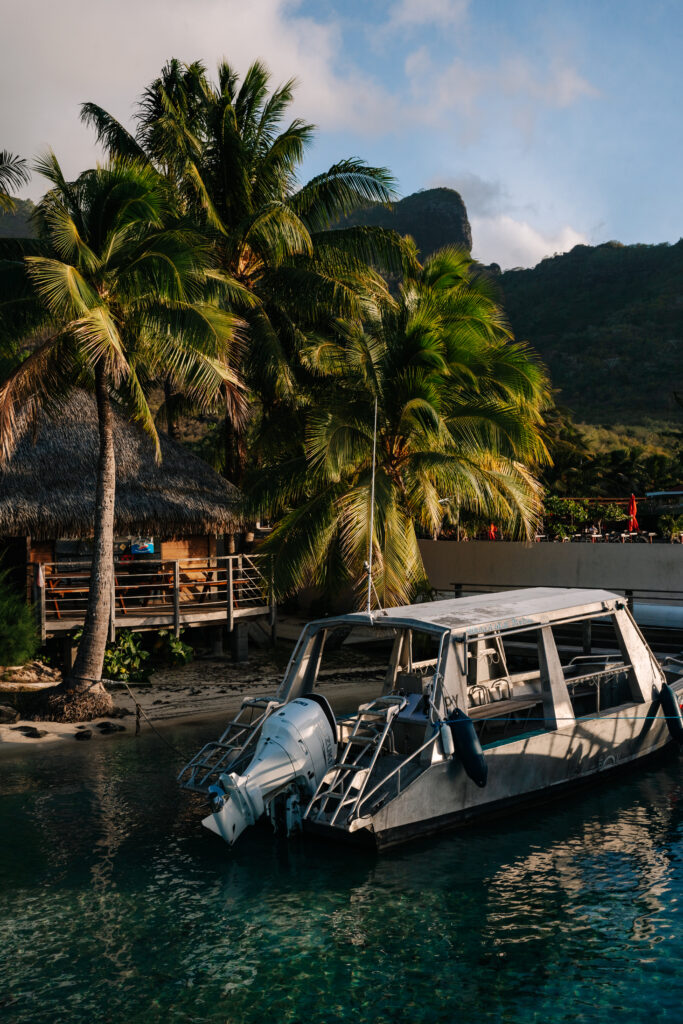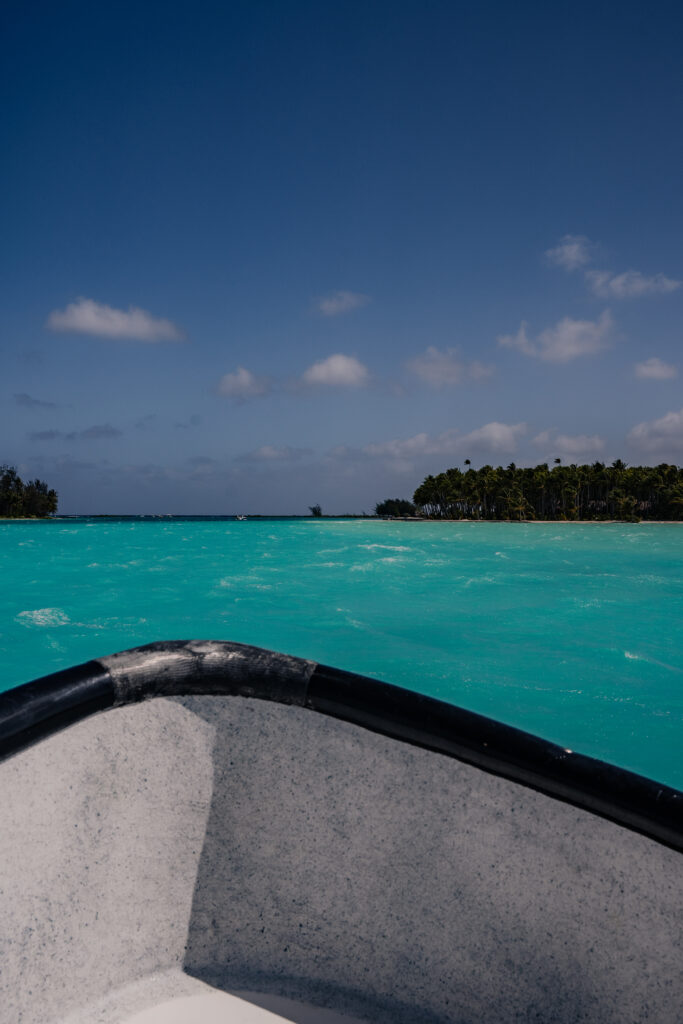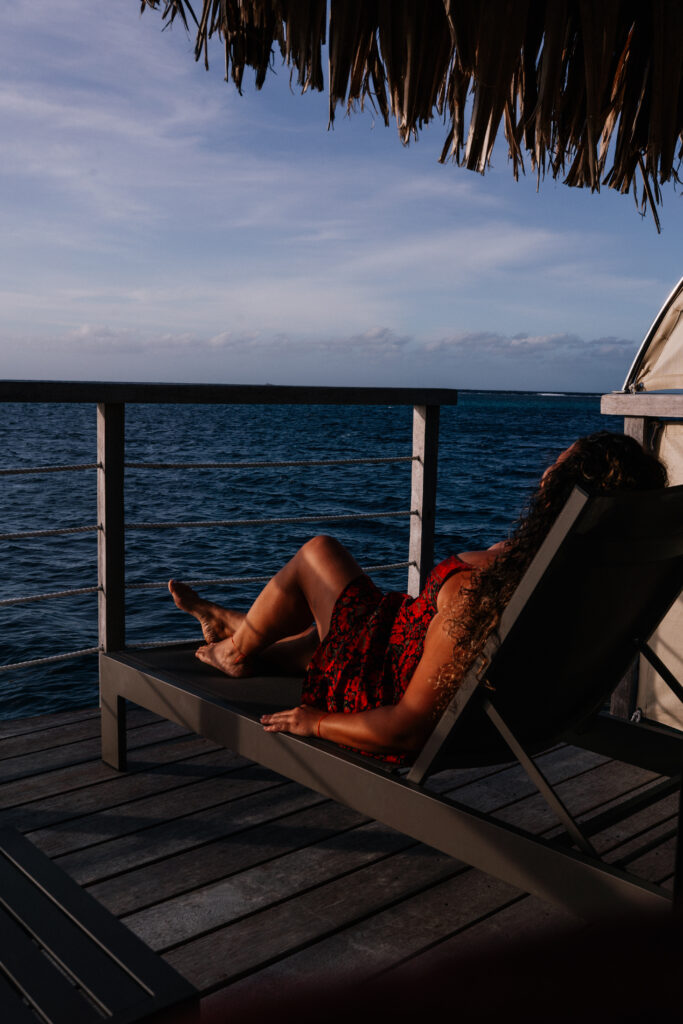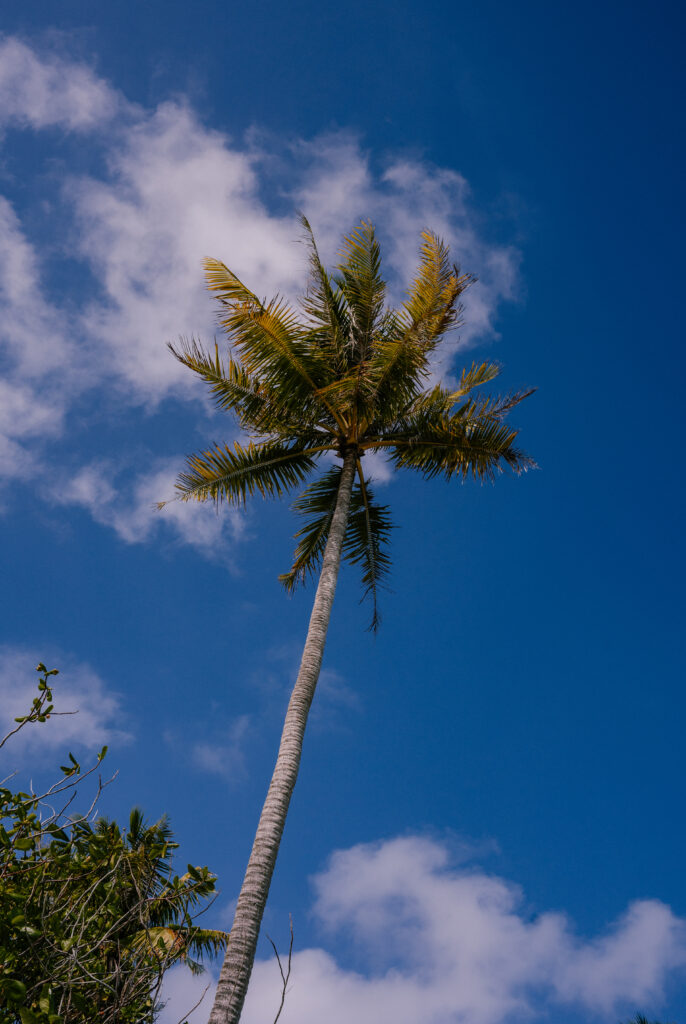Close your eyes and imagine: turquoise lagoons blending into the deep blue of the ocean, mountains rising directly from these blue waters, and luxurious overwater bungalows gently lapped by waves, with endless golden beaches lined with rows of palm trees in the background. It’s the most beautiful paradise I have ever experienced. French Polynesia is a true gem and a unique spot on the world map—scattered islands hidden in the middle of the ocean. It’s one of the most exotic and fascinating places on Earth, especially for those interested in marine life, which can be observed here up close. It’s also one of the few places in the world where you can swim with whales, where you can freely glide alongside sharks and stingrays, where there’s no public transportation on the islands, and where some airports are practically set on the water. The paradisiacal landscapes also feature lush, green hillsides, pineapple fields, and breathtaking bays. Sunset catamaran cruises, traditional Polynesian dinners with dance performances, a visit to a black pearl farm, or watching fresh vanilla being produced on a family plantation—these are all part of the beautiful and unique Polynesian culture that invites visitors to explore and get to know this country.
Now, once again: close your eyes and imagine—your feet sink into soft sand, caressed by warm, clear water. Behind you, you hear the wind rustling through tall palm trees, and you wade into the water, gazing into the deep blue ocean, thinking of all the beautiful creatures for whom these waters are home. The blue sky reflects in the calm surface of the ocean, and the sun’s rays pleasantly warm your skin. You’re surrounded by silence, as most Polynesian beaches are uncrowded, allowing you to completely lose yourself in the moment.
For years, French Polynesia has attracted tourists in search of beauty, the tranquility of nature, and the chance to fully immerse themselves in it. Here, you’ll find stunning coral reefs, tiny atolls embraced by the endless azure of the lagoon, majestic mountains and temples, fresh fish, luxurious overwater bungalows, and most importantly, a vibrant underwater world that you can observe up close.

I’ve never seen beaches like these in my life! And the best part about Polynesian beaches: they’re uncrowded. Each island in Polynesia has its own unique beaches, but Bora Bora is famed for having the most beautiful of all—Matira Beach. Plage publique de Matira is wide and pristine, with golden sand caressed by clear, inviting waters. Nearby, you’ll also find restrooms and shops. Polynesia is home to quiet beaches surrounded by bays, tiny atolls, and idyllic motu islets, where you can truly breathe and unwind. There are no crowded beaches here with the noise of bustling crowds, blaring music, or loud vendors hawking drinks. Every beach is serene and truly spectacular. Most beaches on the small motus are stunning: nearly untouched by human hands, dotted with palm trees and tropical plants that add to the paradise-like charm. These beaches are small atolls sprinkled with golden sand, washed by the crystal-clear waters of the lagoon, showcasing sunsets that paint the sky in shades of pink and orange, and the soothing sound of the ocean. Far from the crowds, Polynesia offers places where you can completely relax and feel as if time has slowed down.
You’ll find stunning beaches not only on small atolls like Tikehau and Fakarava but also on the larger islands, such as Moorea. Here, you’ll discover public beaches (the best are Temae and Tiahura) and hotel beaches (like Plage des Tipaniers). They all share one thing in common: they offer the luxury of peace and immersion in nature amidst a noisy world.
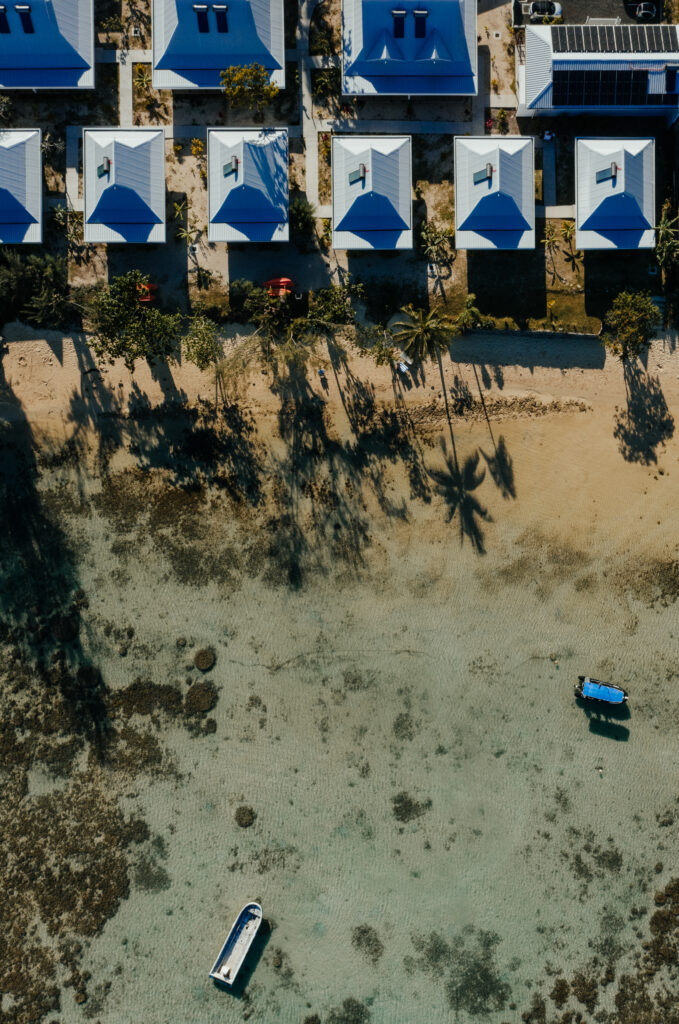
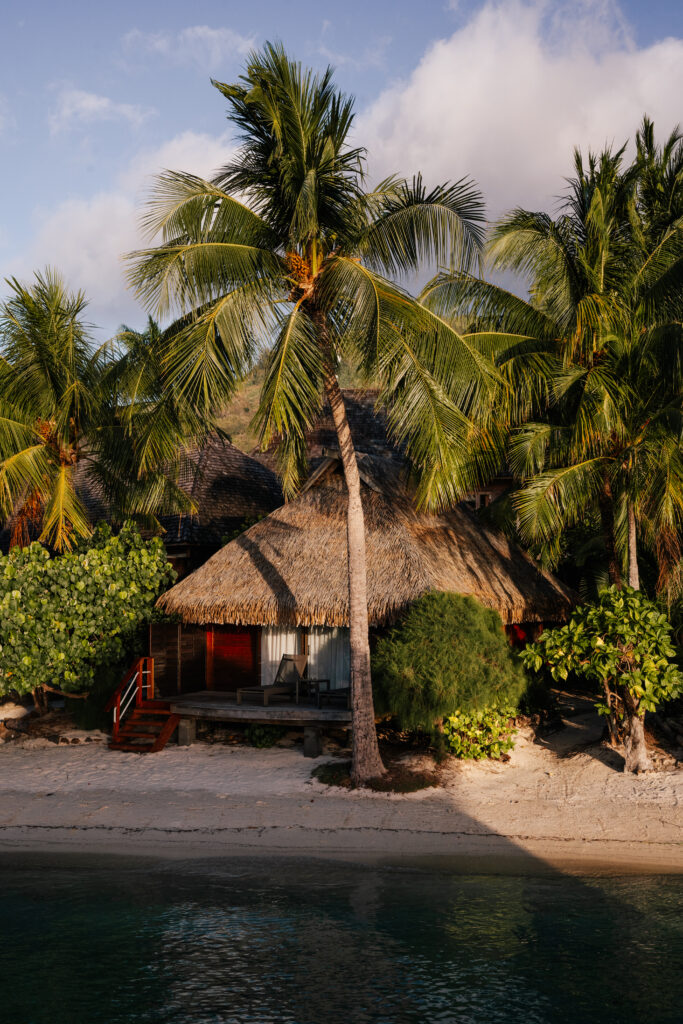
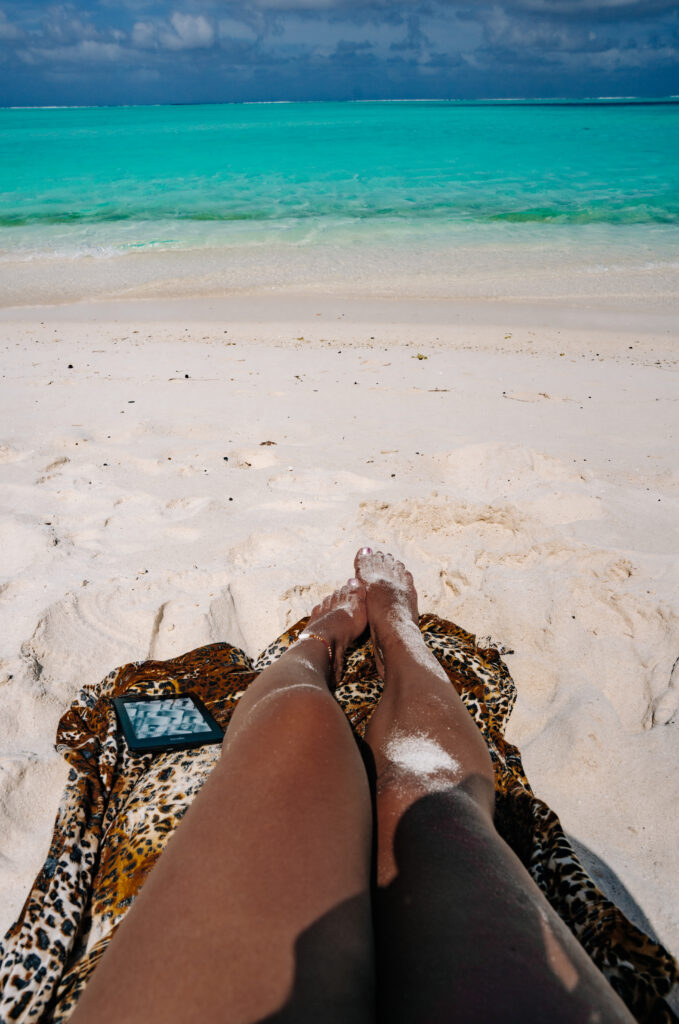
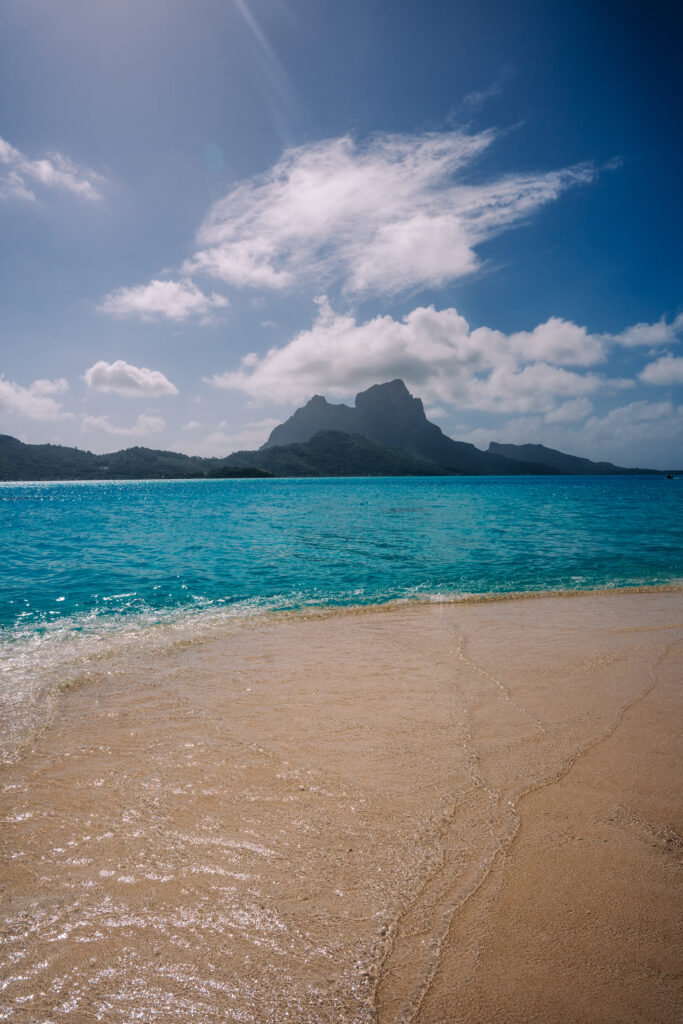
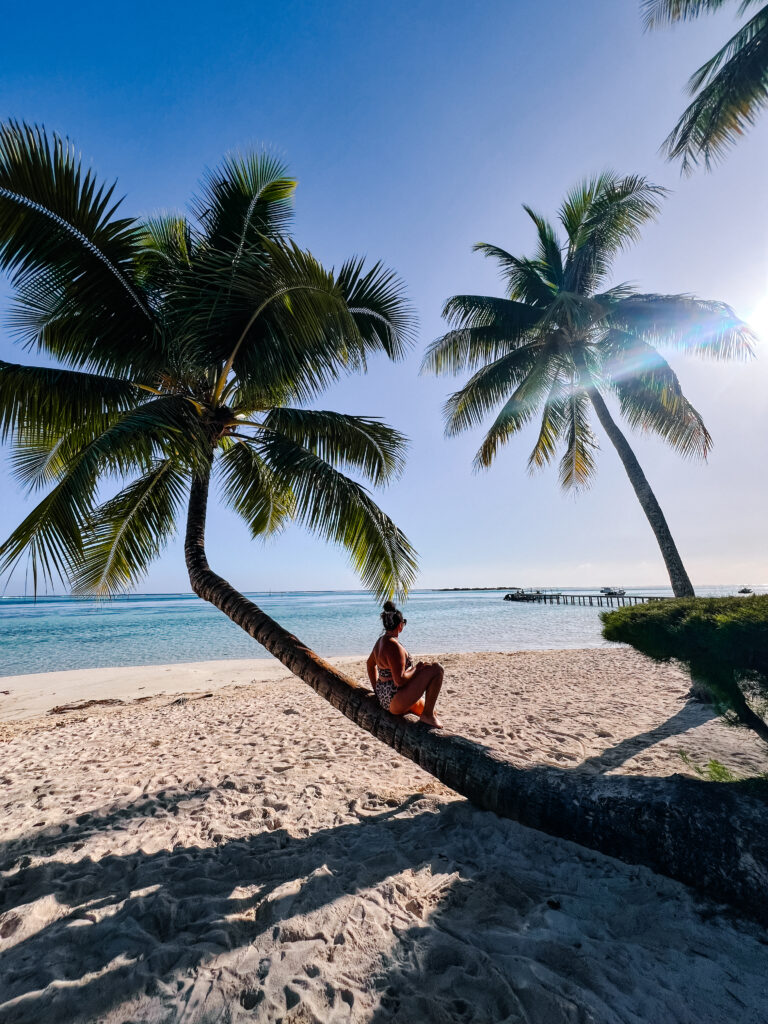
Seeing whales was a huge dream of mine. Humpback whales, known as gentle giants (weighing up to 40 tons!), are not only beautiful but incredibly intelligent. The best time for viewing them is July through October when humpbacks migrate to French Polynesia's waters to breed. Each year, they return here for mating, then return the following year with their young. There is something magical about them, perhaps due to their graceful strength combined with their intelligence and sensitivity; they build close relationships, sing, and communicate with each other. At the same time, they are heavily dependent on us, vulnerable to the destruction of oceans. Whale motherhood is strikingly similar to human experience—mothers care for, love, and teach their young. With luck, you may witness their impressive leaps above the water and even hear their haunting underwater songs. For me, this was the most incredible experience of my life, not just of this journey. Swimming close to a whale mother and calf, being within her gaze, was truly out of this world. It was a beautiful experience, showing how small we are compared to Earth and the underwater world, which remains so unknown.
The ocean and its inhabitants truly teach us humility. Whether we get to see these beautiful, singing giants is a matter of chance, but it’s also up to the animals themselves, as we are the visitors in their oceanic home. Few things are more awe-inspiring than the majestic leaps of whales above the water or their gentle gazes as they curiously approach divers. Approaching whales closer than 100 meters is prohibited, and starting in 2024, private boats must maintain a distance of 300 meters. I highly recommend Moorea Moana Tours, true professionals whose owner has founded a foundation dedicated to whale and shark conservation, research, and public education about marine life.
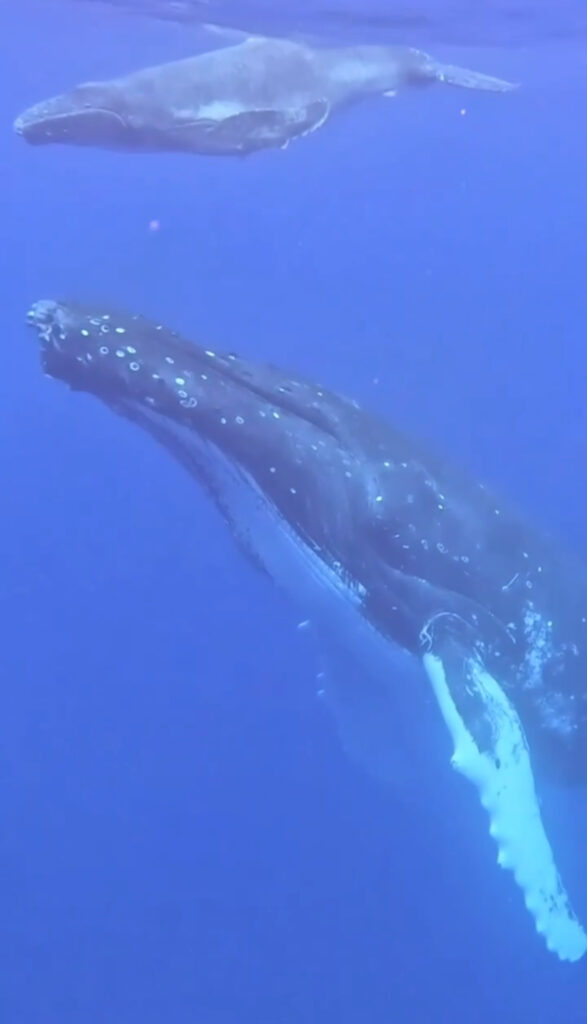
The tropical nature of these islands is perfect for trekking and hiking. The green, wild mountains offer otherworldly views, and the landscapes are truly unbelievable. You’ll find green slopes covered in wild forests that gently descend to golden beaches, and surprisingly, you may even see chickens roaming through the jungle! Polynesia has no dangerous or wild animals, no venomous spiders, and no deadly snakes, making it a very safe place. This allows even beginners to feel comfortable exploring the wilderness. Moorea is the easiest and greenest island to explore, while the most spectacular and wild region of Polynesia is the remote Marquesas. The landscapes of these islands enchanted even Paul Gauguin (more on him below). In all of Polynesia, there are plenty of companies that can organize 4x4 safari tours with breathtaking views for you, but it’s also easy to arrange your own trekking experience since the infrastructure is excellent. On the trails, you’ll encounter lush greenery, caves, waterfalls, and tropical forests in an explosion of vibrant colors.
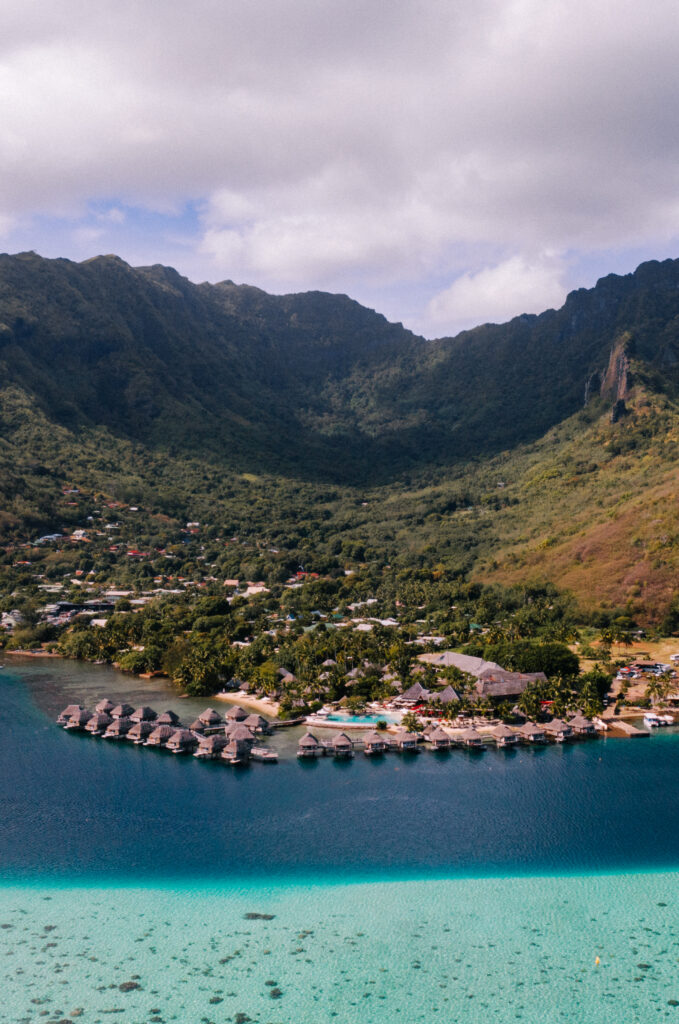
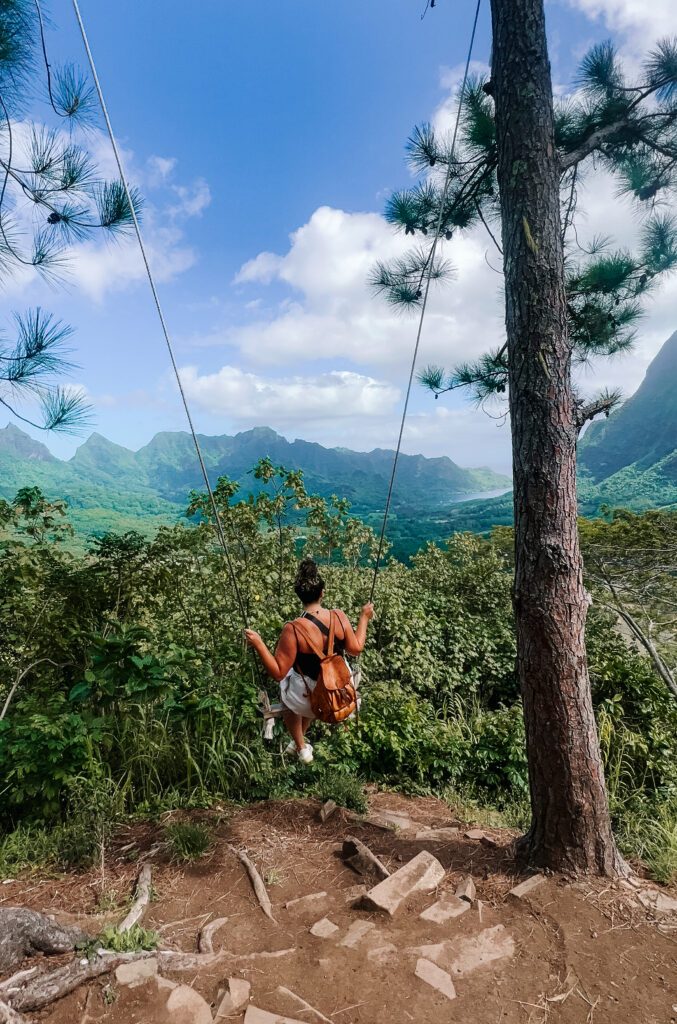
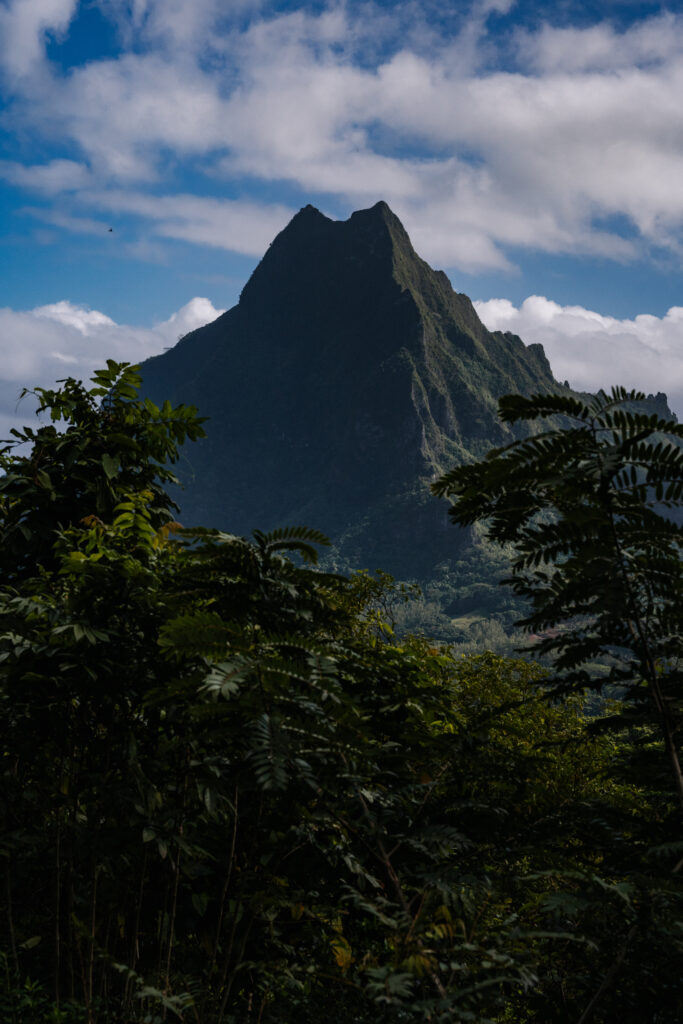
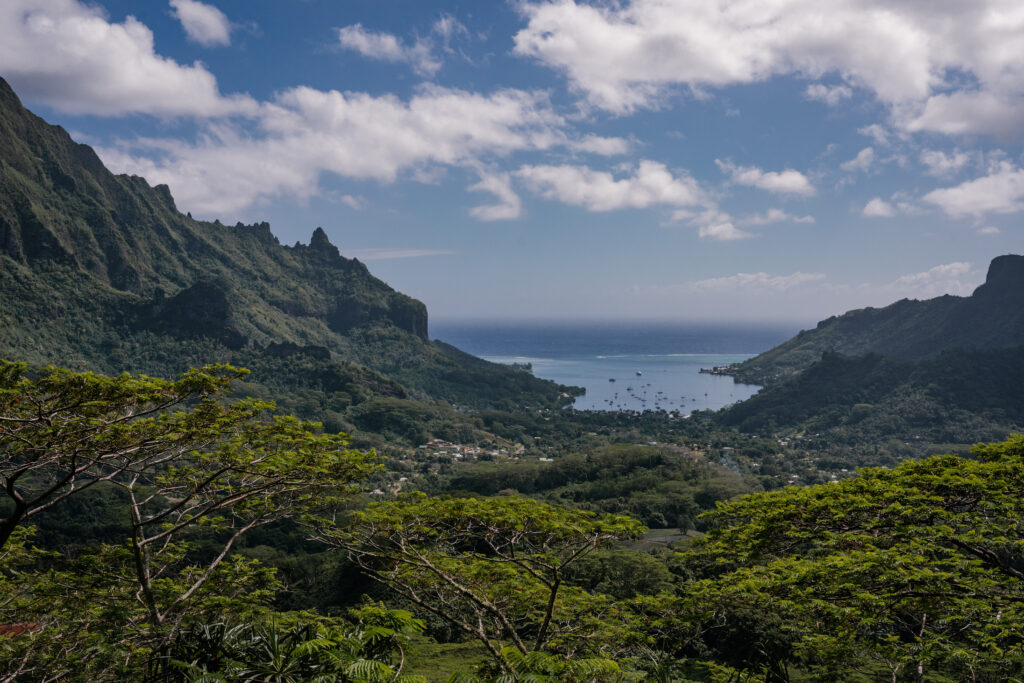
For diving enthusiasts, French Polynesia is a dream come true. You can admire the coral reef around the island of Taha’a, brimming with vibrant colors and rich marine life, venture into the sparkling waters off the coast of Rangiroa, or swim with sharks on Moorea or at the atoll Fakarava. Thousands of fish species form underwater constellations among colorful anemones—a magical, otherworldly sight. The most beautiful coral gardens underwater I saw were on the island of Taha’a, where the ocean currents between two islands carry you gently along, revealing the underwater treasures. In my opinion, French Polynesia is one of the best places in the world for diving and snorkeling. On the islands of Moorea, Bora Bora, and pretty much all the others, you’ll find a wide range of diving courses, from one-day introductory lessons (which cost less than 100 euros—a great way to test if diving is for you) to multi-day courses with a PADI certification exam. The waters of Polynesia are known for their exceptional visibility, reaching up to 30 meters. During diving or snorkeling, you’ll marvel at beautiful coral reefs, underwater canyons, and even shipwrecks. Beneath the surface, you’ll encounter not only turtles, dolphins, and sharks but also majestic manta rays. In Polynesia, you won’t want to leave the water!
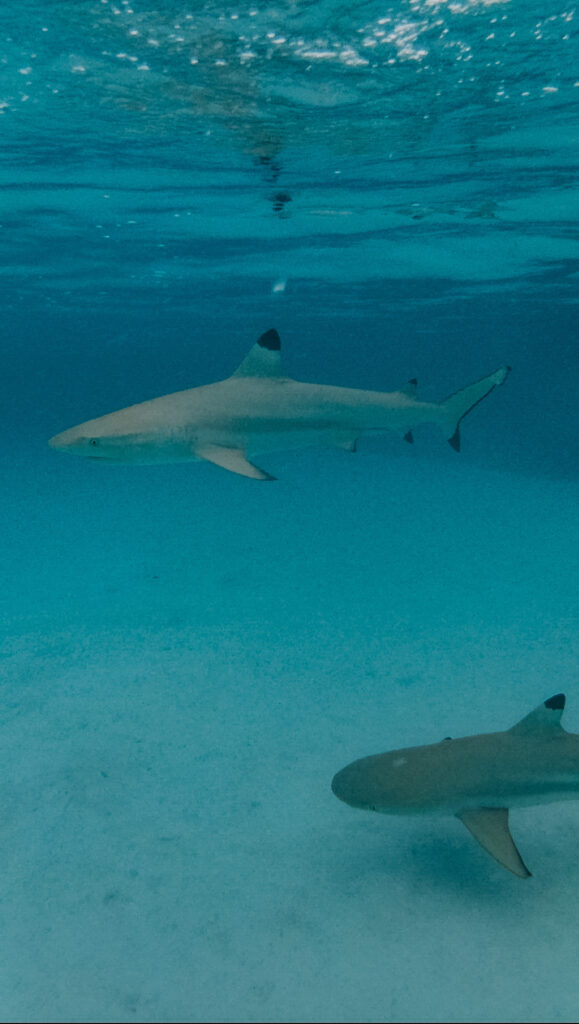
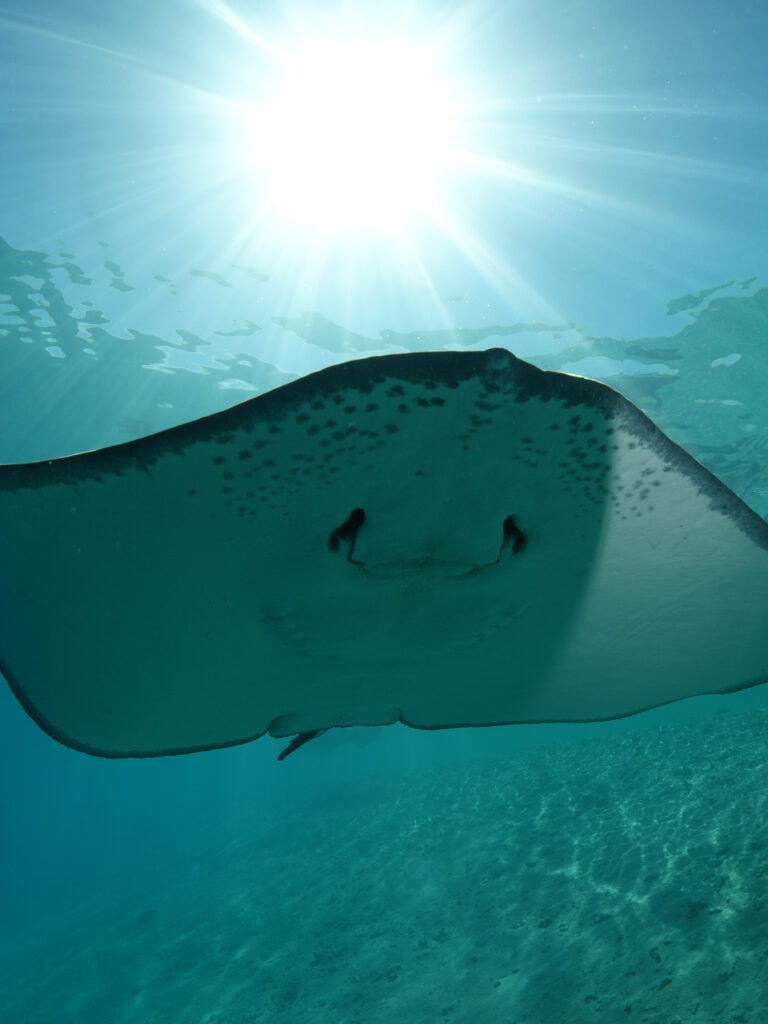
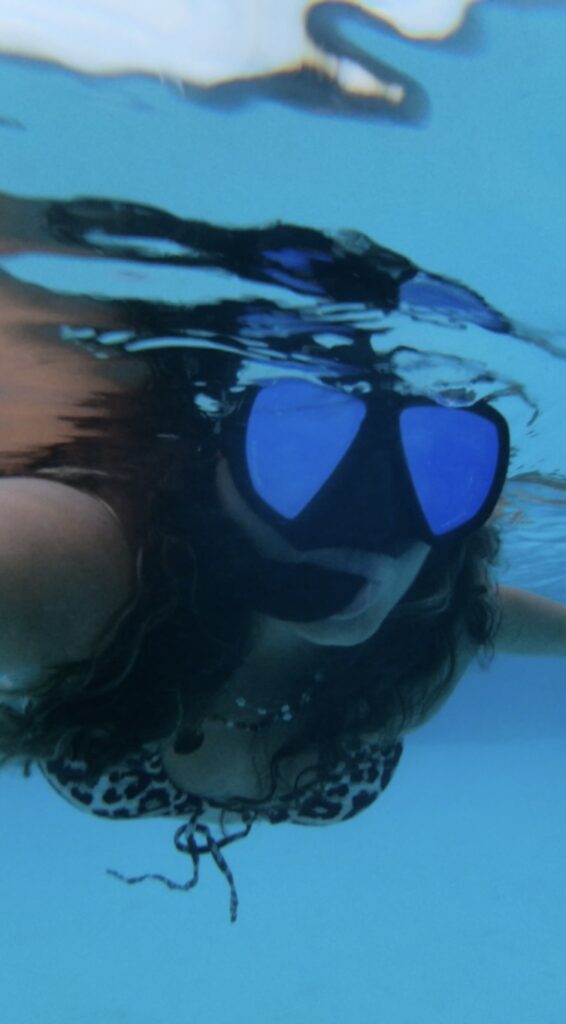

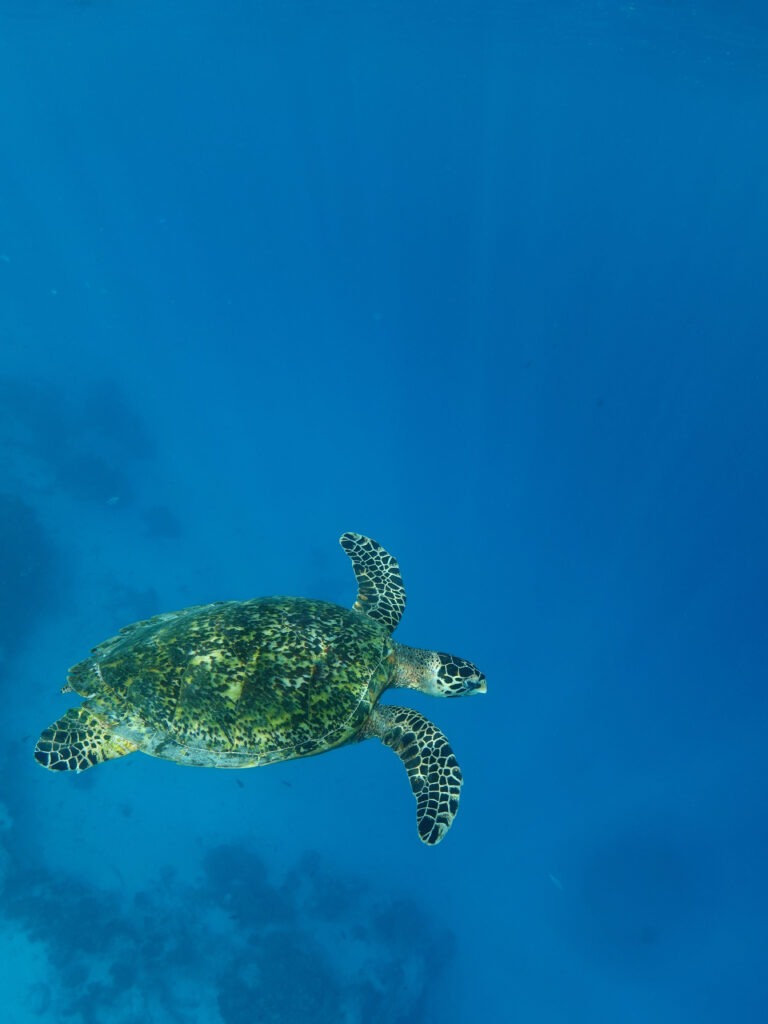
Polynesia is famous for its stunning luxury hotels, where you have your own overwater bungalow. It was here, in the 1960s, that overwater bungalows first appeared, becoming a global symbol of luxurious travel. Each bungalow offers a private terrace, often with a ladder leading directly into the lagoon, so you can start your day with a refreshing swim in the blue waters. It’s amazing to see fish, rays, and even sharks swimming beneath the bungalow, and you can jump straight from your terrace into the clear lagoon for snorkeling. The view from the bungalow takes your breath away, especially at sunset when the sky turns shades of pink, and, with a bit of luck, fiery colors. Here, you can savor the peace and intimacy, listening to the waves gently lapping against the bungalow’s structure and watching fish through a glass table in your room. At night, when complete darkness falls, the silence is broken only by the ocean’s hum, and in the distance, you may hear splashes from marine animals. These overwater bungalows allow you to enjoy nature without sacrificing comfort or luxury. In a bungalow, you feel like you’re in an exclusive boutique hotel and at the same time on a deserted island. Here, you’ll find privacy, beautiful views, and closeness to nature. From comfortable interiors to relaxation on your private terrace and snorkeling right outside your door, this is a luxury that truly lets you feel the spirit of a paradise getaway. The entire experience was pure magic! If you’re traveling to Polynesia, I highly recommend treating yourself to at least one or two nights in an overwater bungalow.
The most popular bungalow hotels:
Some of these resorts, like St. Regis and Four Seasons, are located on motu (tiny islets), others on smaller islands in the lagoon around Bora Bora (such as Sofitel), and still others on the main island.
And the last place – not water bungalows, but a truly unique hotel – is The Brando. It is an eco-resort on the tiny private island of Tetiaroa (which is actually an atoll consisting of several small motus surrounding a lagoon), which Marlon Brando bought in 1967 for the modest sum of 200,000 dollars.
I had the pleasure of staying for a few days in a beautiful bungalow at Manava Beach Resort & Spa – here you can find a report of my stay at this luxurious hotel.
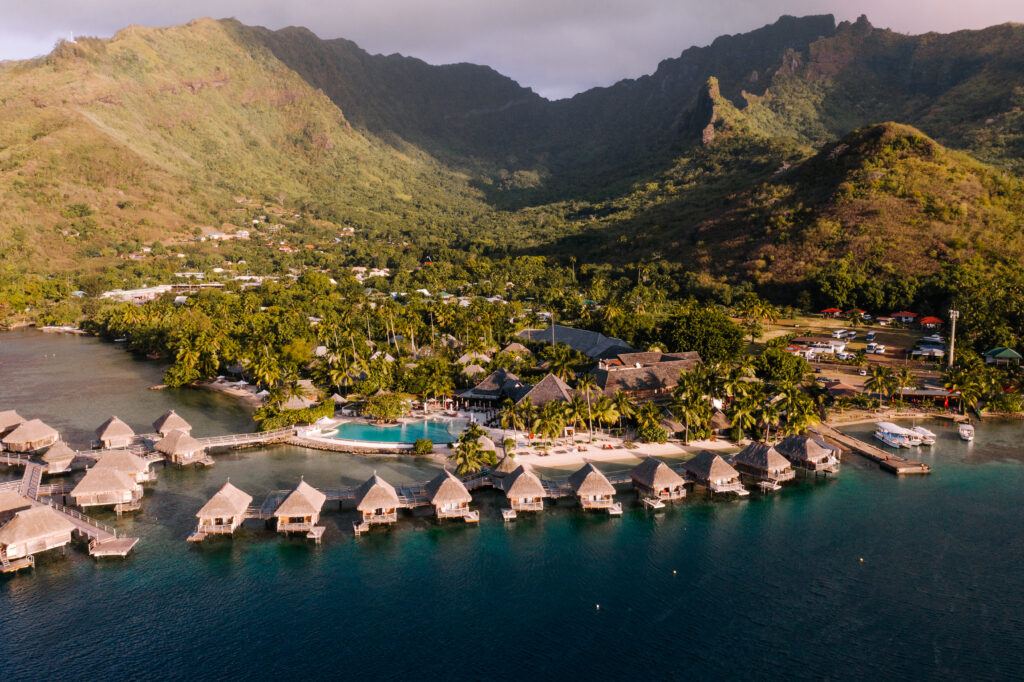

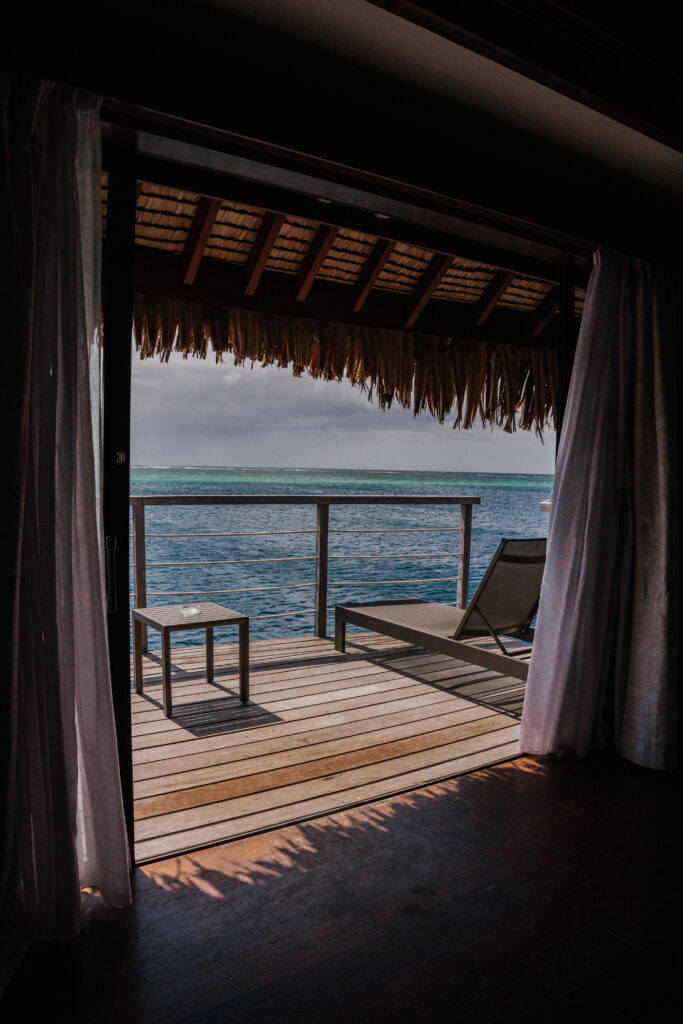
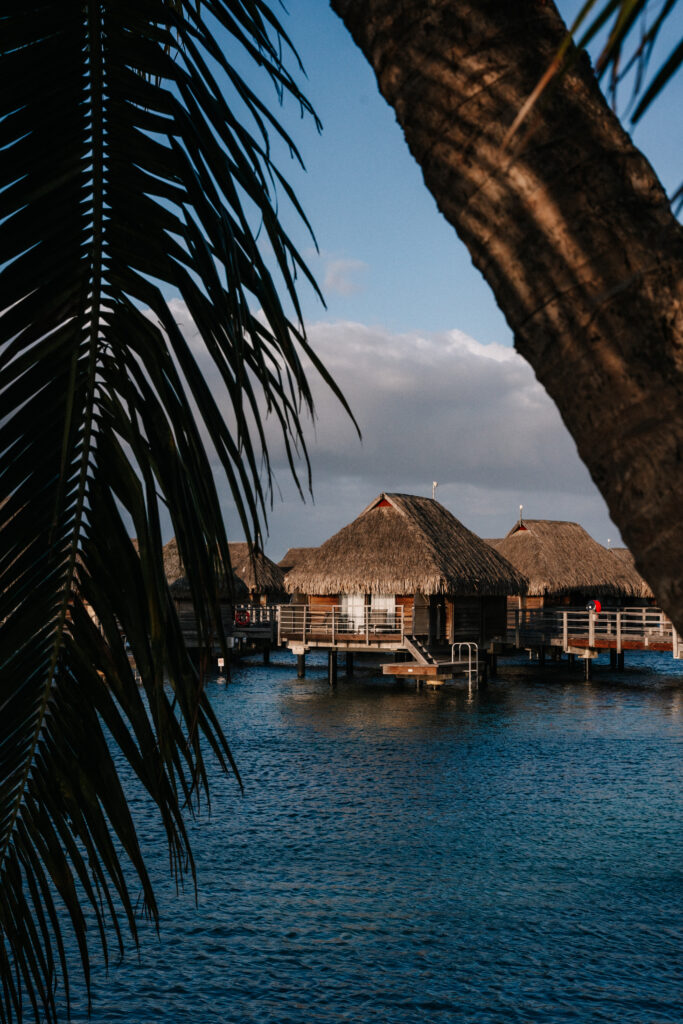
In Polynesia, you won’t find crocodiles, venomous spiders, or deadly snakes, but you can swim with sharks! Polynesian islands offer plenty of activities for nature lovers and water sports enthusiasts. Besides whale, turtle, and dolphin watching, you can go snorkeling on reefs, try underwater scootering, take lagoon and sunset boat trips, visit the charming nearby motu, enjoy private romantic outings, or take surfing lessons. One incredible activity that you can often do for free here is swimming with sharks and rays. On most islands, it’s more convenient to pay for a guided tour, as guides have extensive knowledge and know exactly where to find sharks, rays, dolphins, turtles, and mantas. However, in some places, all you need is a rented kayak and a snorkeling mask. One such place is the lagoon near Les Tipaniers beach on Moorea. Right off Les Tipaniers beach, you can explore the lagoon, literally jumping off kayaks to swim with sharks and rays that freely glide between kayaks and boats. If you’re lucky, you might even spot a turtle. For the exact location, search Google Maps for Banc de sable raies et requins. The water is relatively shallow (about 160-170 cm). This is a fantastic experience if you love marine life. Also on Moorea, while kayaking in the shallow lagoon waters in front of the NIU hotel, I had the pleasure of swimming alongside rays passing calmly by.
The warm, clear ocean waters are also home to several species of dolphins, which can be seen in many places around Polynesia.



From kayaking, surfing lessons, e-sup, sailing, to diving courses—Polynesia is the perfect place to practice and try water sports, especially in the warm months, ideally towards the end (August-September) when the waters are at their clearest and calmest. Water sports in Polynesia are extraordinary in that even during simple snorkeling, you can encounter manta rays, sharks, and even whales. This rich marine life and the beautiful coral gardens make Polynesia one of the best places for snorkeling. For those seeking a thrill, there’s also kitesurfing and parasailing, underwater scooters, or snorkeling jets. You’ll find hidden coves, underwater caves, vibrant kaleidoscopes, and entire underwater universes of coral and fish. Whether you’re an experienced water sports enthusiast or an amateur, in French Polynesia, you’ll find countless opportunities to experience thrilling water adventures.
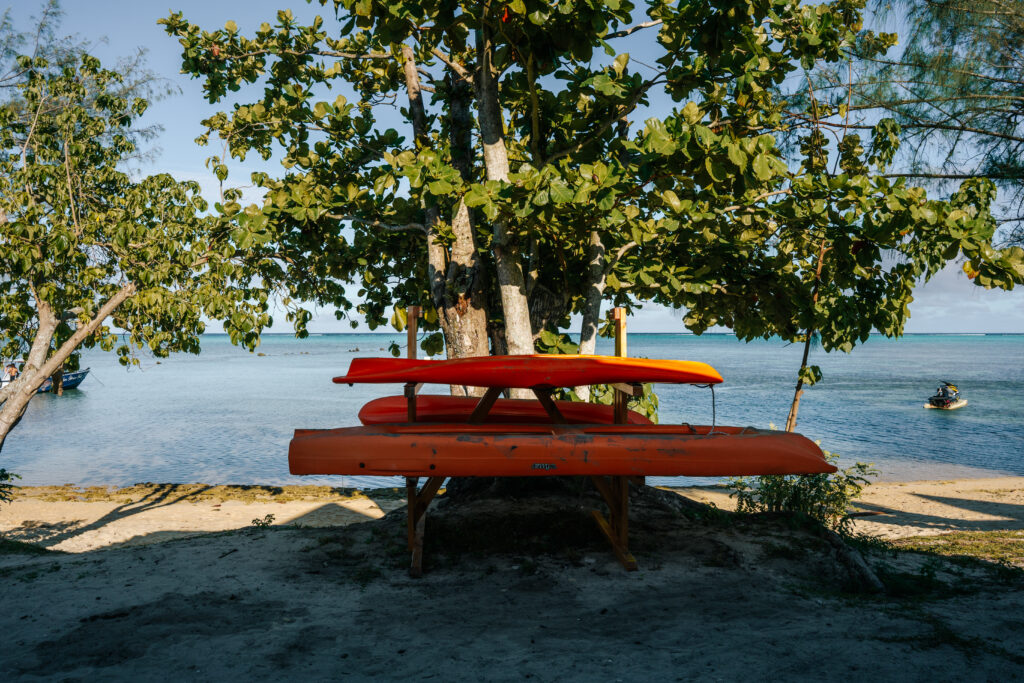
Polynesia is not only about breathtaking views but also a unique culture, fascinating ceremonies, traditional tattoos, and local crafts. It has a captivating history of belief systems, gods, ancestors, and shamans. For a deeper dive into Polynesian culture and local traditions, visit the Museum of Tahiti and the Islands (Musée de Tahiti et des îles). However, the best way to connect with local culture is through craft workshops, such as basket weaving or traditional pareo painting. While on Moorea, make sure to visit Tiki Village, where you can participate in workshops like necklace making, cooking, or bag weaving. These workshops allow a closer look at local history and customs, and with some luck, you might even witness a traditional Polynesian wedding filled with dances, songs, and music—a fantastic way to experience Polynesia’s rich traditions and history.
Tattoos: One of Polynesia’s most fascinating traditions is the “tatau” ceremony. Deeply rooted in local mythology, tattoos here have both ornamental and spiritual significance. Polynesian designs carry profound symbolism, and they’re breathtaking in their artistry and detail—a unique keepsake for those daring enough to adorn their body in this traditional way.
CEREMONIES AND DANCES: In Polynesia, the rhythmic sounds of drums and the hypnotic movements of dancers tell the stories of ancient Polynesians. These ceremonies, rich in expression and local spirit, provide a wonderful opportunity to experience the authentic culture and traditions of this region, still vibrant and actively celebrated today.
VIBRANT LOCAL MARKETS: On the Polynesian islands, it’s well worth visiting the local markets, where you can buy handicrafts, local delicacies, and traditional-inspired goods. These markets are the true heart of the islands, brimming with colors, scents, and unique products. The largest market is located in Papeete (Tahiti).
BLACK PEARLS AND VANILLA: On islands like Raiatea and Taha’a, you can visit vanilla plantations, where the air is filled with its delicate, sweet fragrance. Polynesian vanilla is among the best in the world, making it a perfect souvenir. In Rangiroa, it’s worth visiting the black pearl farms, where you can witness the cultivation process and, if your budget allows, purchase a unique keepsake.
CRAFT WORKSHOPS: Creative individuals can connect with local artisans and try their hand at traditional techniques such as weaving, carving, or traditional tattooing. These crafts are an integral part of Polynesian cultural identity and provide a deeper insight into local traditions.
IMPORTANT ARCHAEOLOGICAL SITES: One of the most significant sites is the oceanfront Marae Taputapuatea temple on the island of Raiatea, with a history spanning hundreds of years. This place of worship and gathering for ancient Polynesians is now one of the most important archaeological sites in the region.
HISTORICAL AND CULTURAL TOURS: On islands like Hiva Oa and Nuku Hiva, tours are organized that focus on the culture and history of Polynesia. These are ideal destinations for exploration, especially for those who wish to immerse themselves in the rich past and traditions of this part of the world.
MARLON BRANDO: The famous actor arrived here in 1960 while filming Mutiny on the Bounty. He fell in love with both the islands and his on-screen partner. Brando purchased the Tetiaroa atoll, where he settled and created a retreat (now the luxurious resort The Brando, though it was very simple back then, with seashells from the beach serving as washbasins). Today, the resort is accessible only by the hotel’s private plane.
JACQUES BREL: The famous Belgian singer arrived in the Marquesas in 1975 and quickly won the affection of the local residents. The Polynesian archipelago inspired him so much that he created the songs Les Marquises and Jojo. Brel passed away in France, but at his own request, he was buried on Hiva Oa next to Paul Gauguin.
PAUL GAUGUIN: The French painter, a precursor of Art Nouveau, visited Polynesia twice, where he left behind works expressing nostalgia and the influence of symbolism. Unfortunately, his relationships with the local community were difficult – his behavior sparked significant controversy (to put it briefly, he was a rude misogynist, racist, and alcoholic), and he made full and loud use of colonial privileges. It was here that his last works were born, depicting the life and culture of Polynesia.
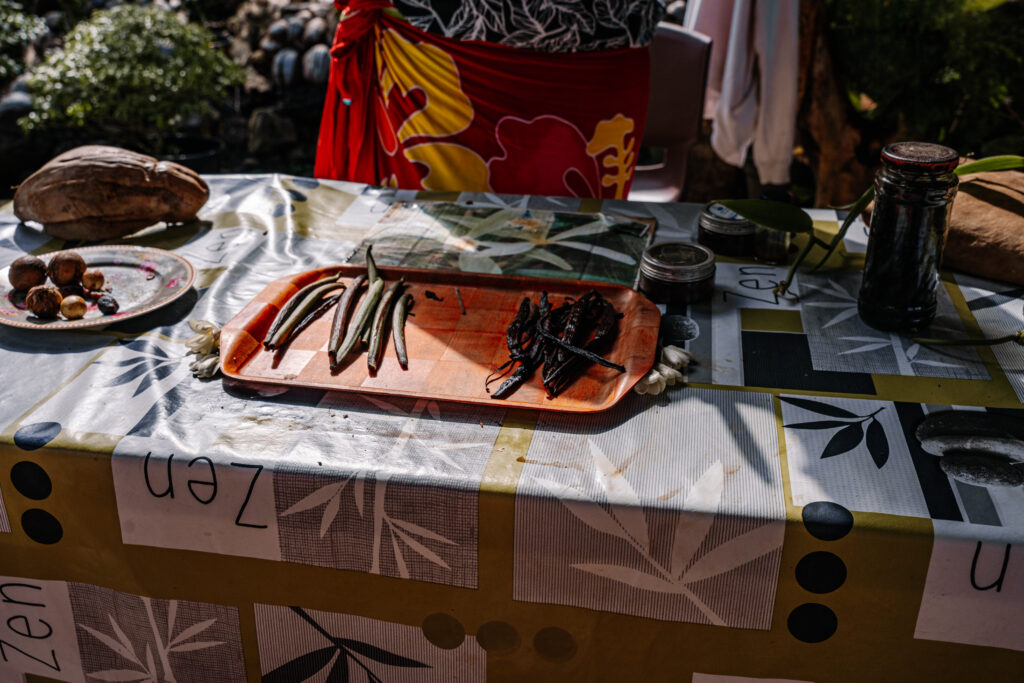
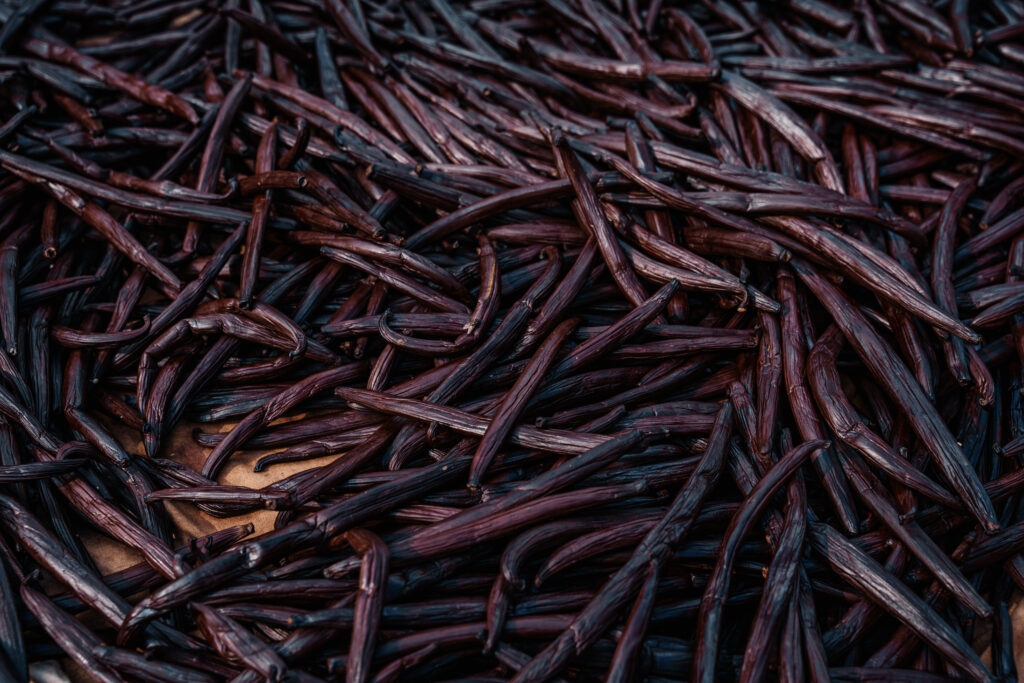
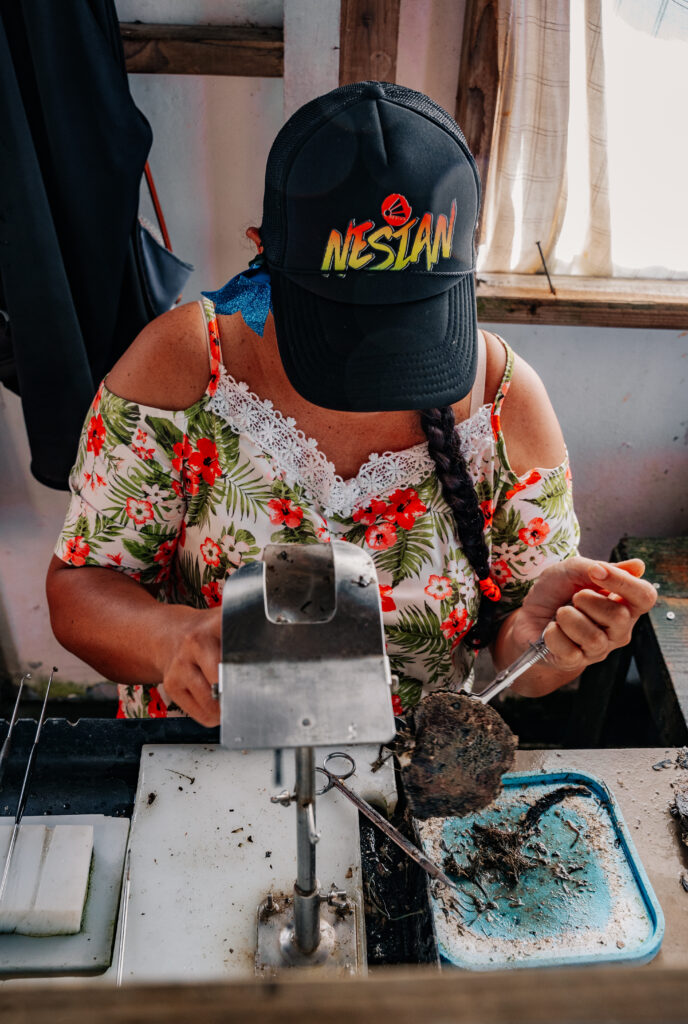
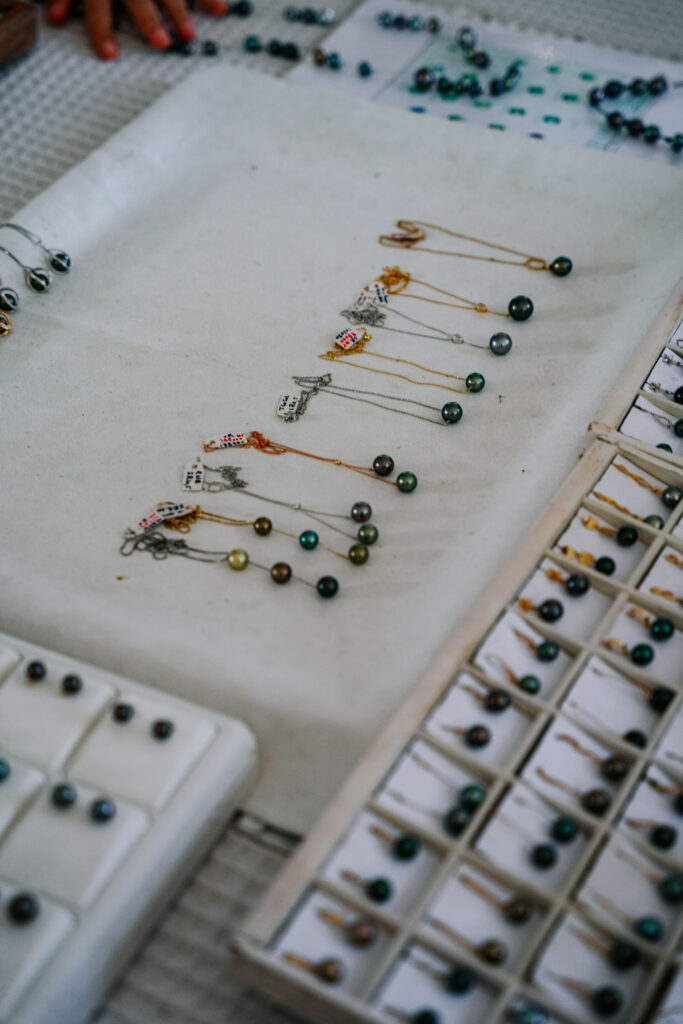
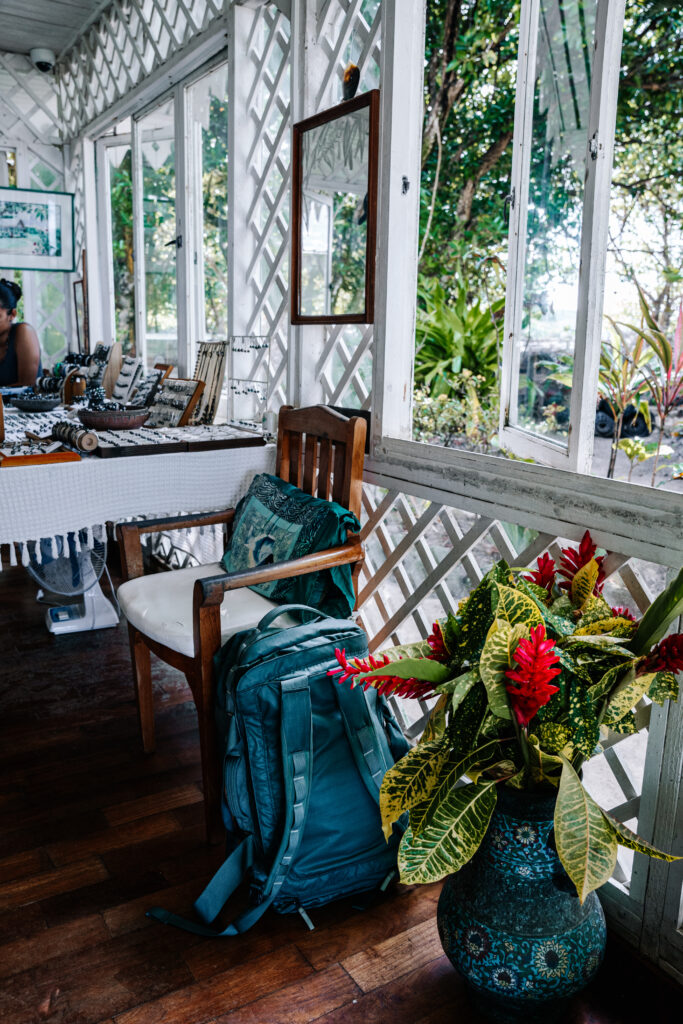
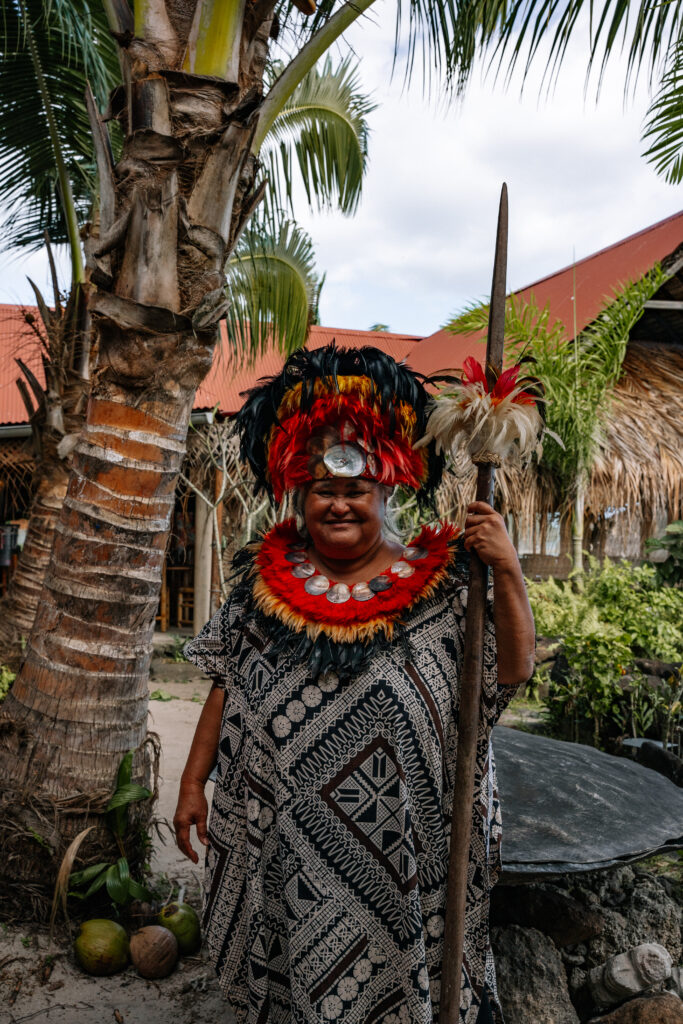

I’ve never tasted such pineapples and tuna! Although French Polynesian cuisine relies heavily on imported products, fresh local fish and tropical fruits offer extraordinary flavors. Be sure to try poisson cru—the national dish of Tahiti, similar to ceviche, made from raw fish marinated in lime juice and coconut milk. Food lovers can also enjoy juicy pineapples from Moorea, sweet mangoes, papayas, and fresh fish like tuna, mahi mahi, and swordfish. Many fish are served in a coconut crust or with aromatic vanilla sauce, giving them a unique, exotic flavor. For tuna lovers, the light and refreshing tuna carpaccio is a must-try. The freshness of these ingredients, often caught just a few meters from the beach, makes every meal a culinary journey into the heart of Polynesia.
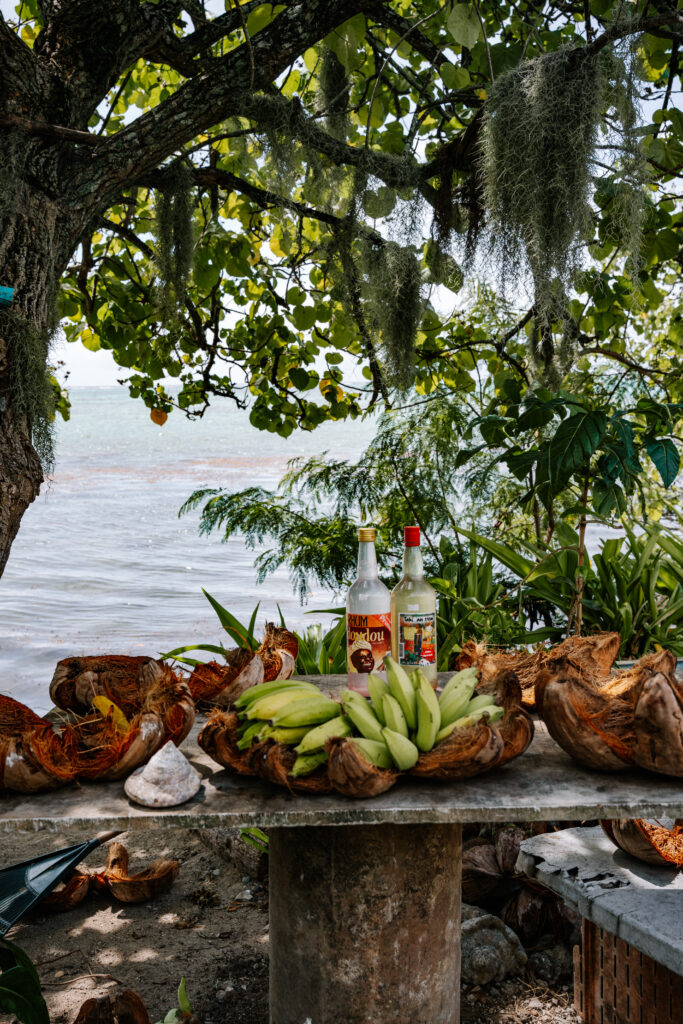


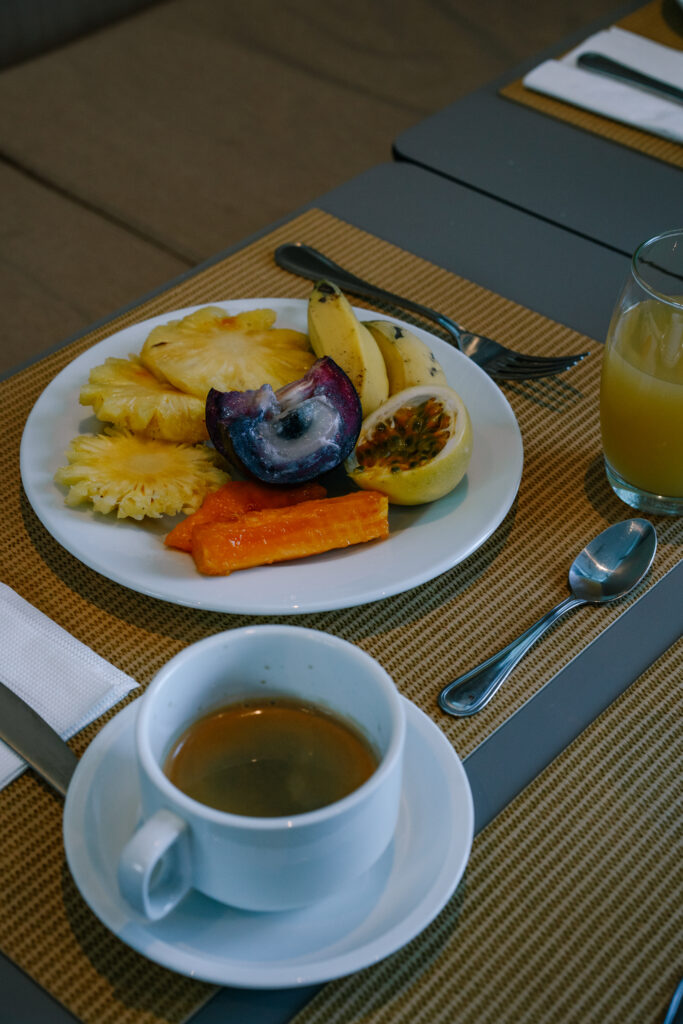

Tiny atolls and motu, palms stretching along golden paradise beaches, small family guesthouses, the wild beauty of the Marquesas, and luxurious resorts—Polynesia offers views that seem almost AI-generated. The colors here are at their most intense—from golden sandy whites to shades of the Pacific’s blues and greens and the deep, wild greens of the mountains. Polynesia is volcanoes and waterfalls, water sports, whale watching, and swimming with sharks, but also the rarest luxury of all—peace and quiet.
The islands of French Polynesia offer countless incredible experiences, adventures, comforts, and pleasures. I wholeheartedly recommend everyone visit such a beautiful place at least once in a lifetime.

